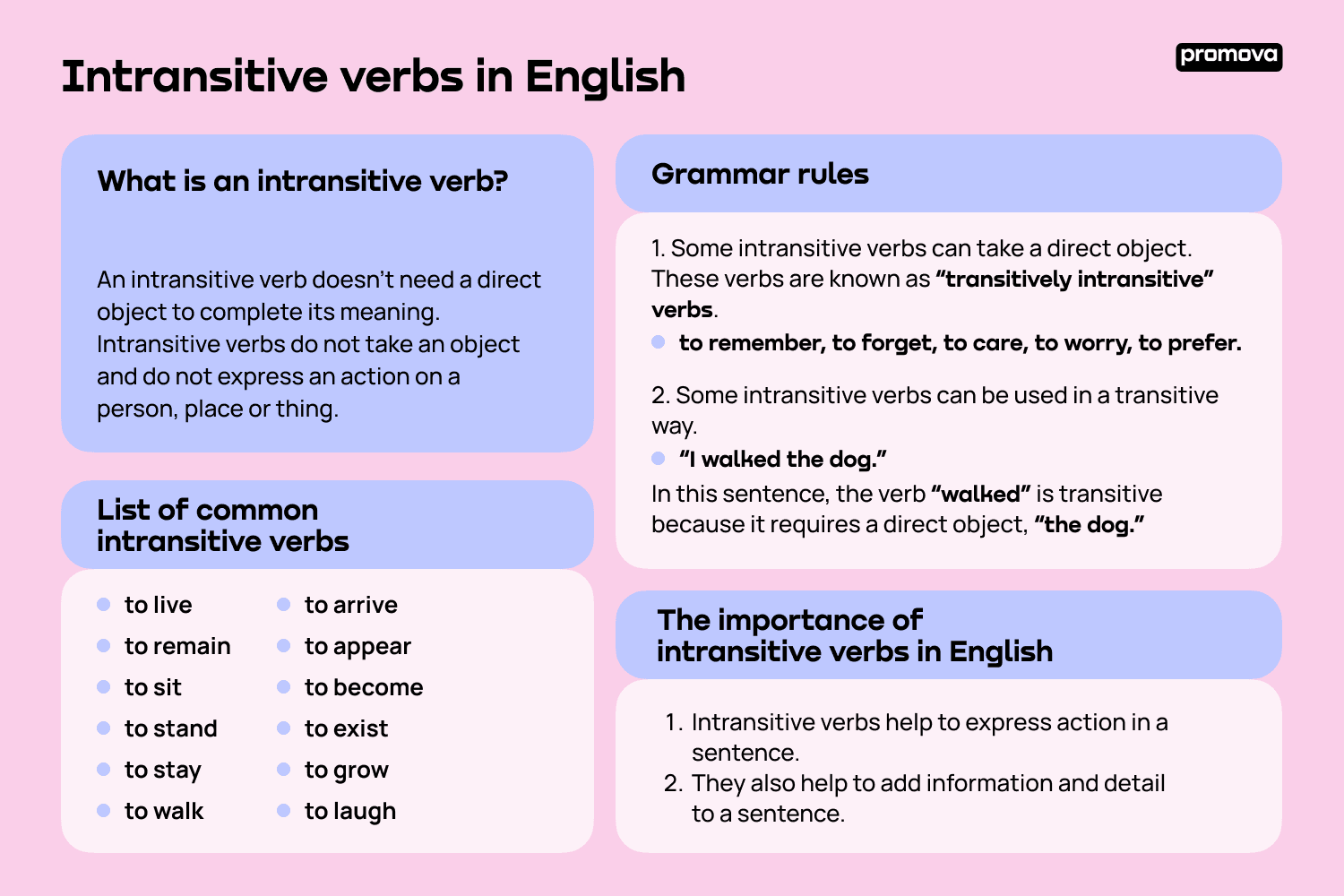Verbs play a crucial role in forming sentences. They help convey actions, states, or occurrences. Understanding the difference between transitive and intransitive verbs can greatly improve your sentence structure and clarity. Let’s delve into the world of transitive and intransitive verb sentences to enhance your writing skills.
Transitive and intransitive verbs are two types of verbs that differ in terms of their usage in a sentence. Transitive verbs require a direct object to complete their meaning, while intransitive verbs do not. This distinction is important in constructing grammatically correct sentences.
Transitive and Intransitive Verb Sentences
Transitive verb sentences consist of a subject, verb, and object. For example, in the sentence “She ate an apple,” the verb “ate” is transitive because it requires a direct object (apple) to complete the action. The object answers the question “what” or “whom” after the verb.
In contrast, intransitive verb sentences do not require a direct object to complete their meaning. These verbs stand alone and do not transfer the action to an object. For example, in the sentence “He sleeps peacefully,” the verb “sleeps” is intransitive as it does not need an object to convey the action.
It is essential to distinguish between transitive and intransitive verbs to ensure the clarity and coherence of your sentences. Using transitive verbs without a direct object or intransitive verbs with a direct object can lead to confusion and grammatical errors.
Transitive and intransitive verbs also affect the passive voice construction of sentences. Transitive verbs can be converted into passive voice sentences, while intransitive verbs cannot. Understanding this distinction can help you manipulate sentence structures effectively.
By mastering the use of transitive and intransitive verb sentences, you can elevate the quality of your writing and enhance your communication skills. Practice identifying transitive and intransitive verbs in sentences to improve your understanding and application of these concepts.
In conclusion, transitive and intransitive verb sentences play a significant role in forming coherent and grammatically correct sentences. By recognizing the difference between these two types of verbs and their usage in sentences, you can effectively convey actions and states in your writing. Enhance your language skills by practicing the use of transitive and intransitive verbs in sentences and elevate the clarity and precision of your communication.
